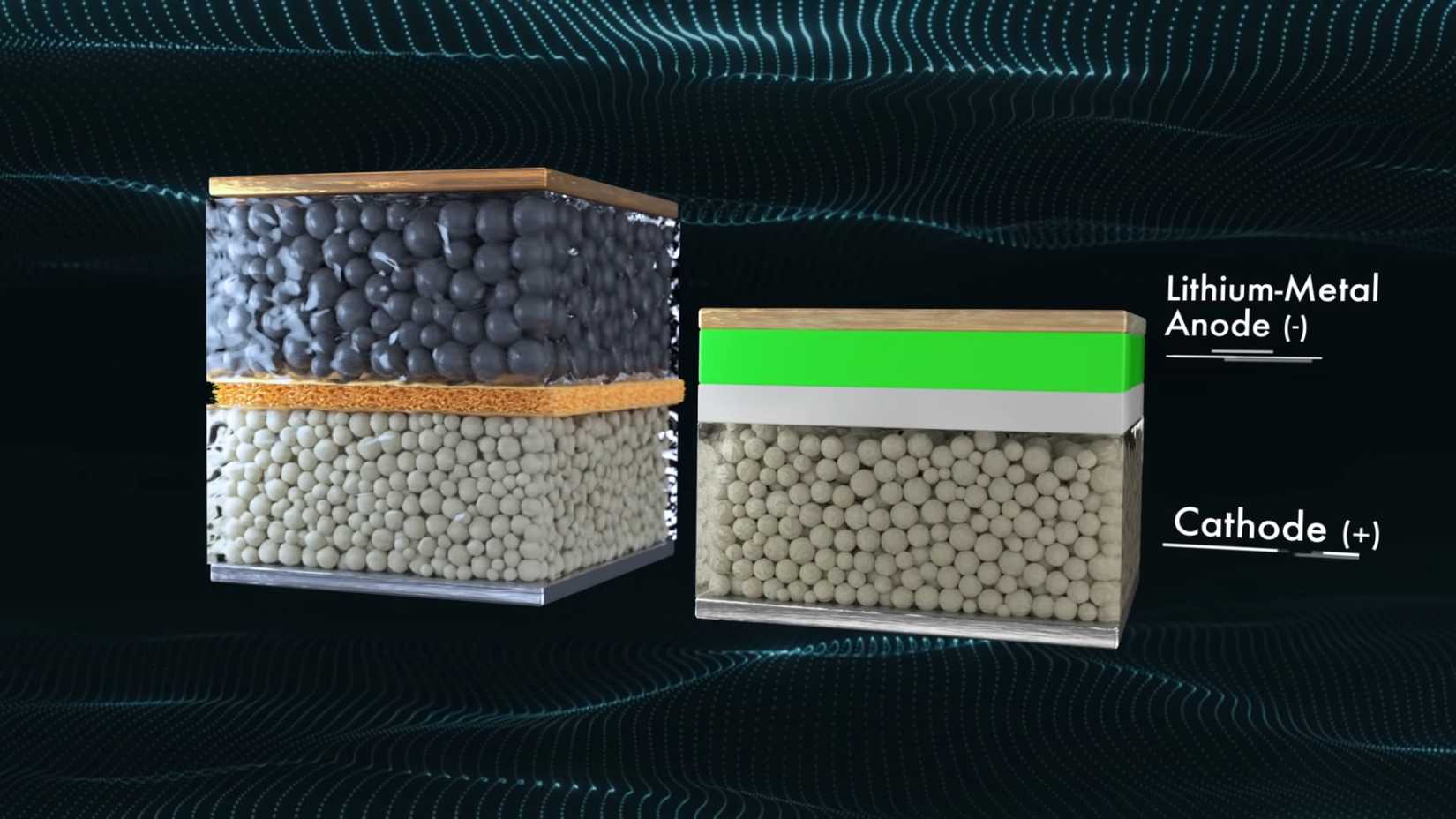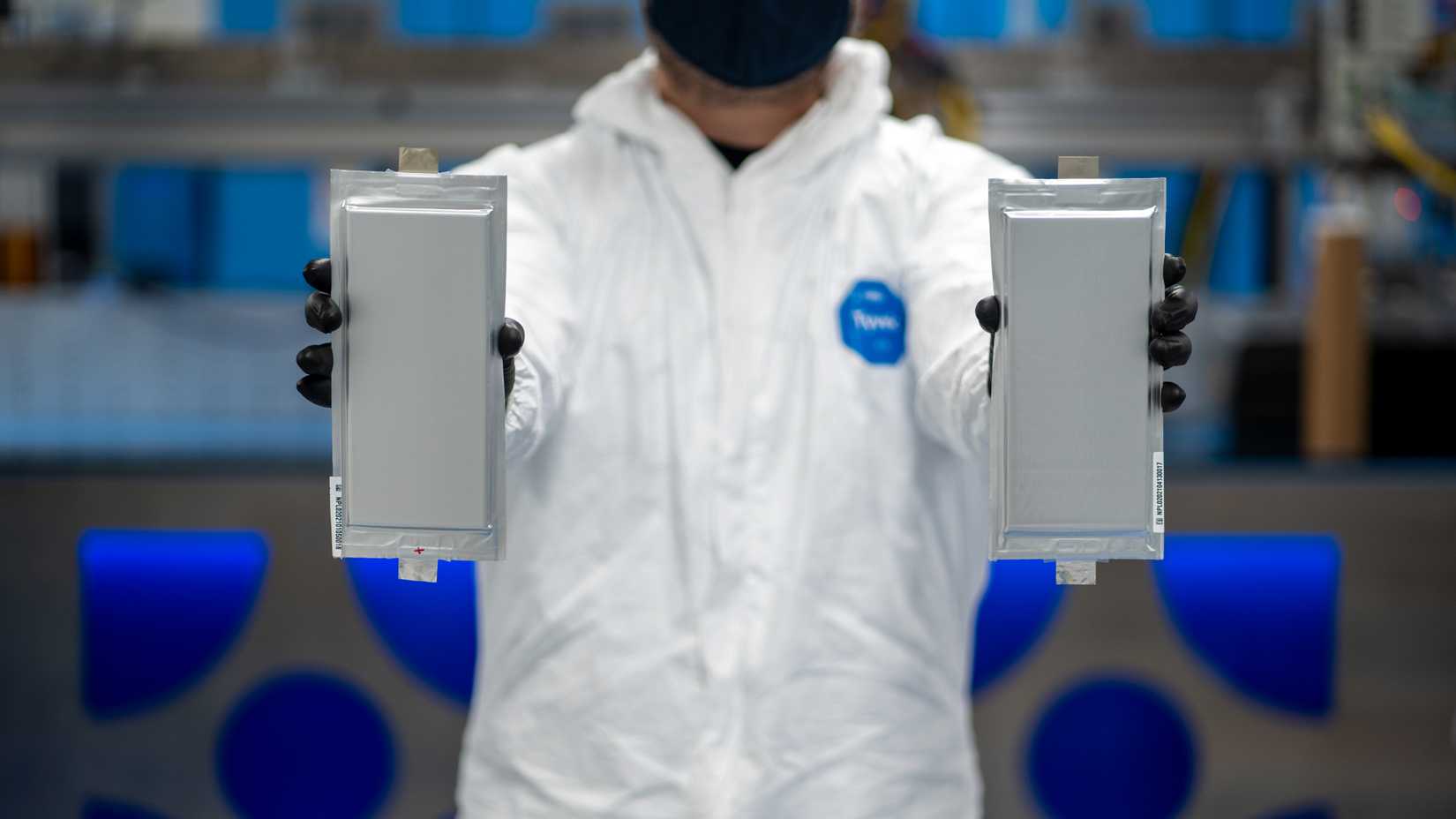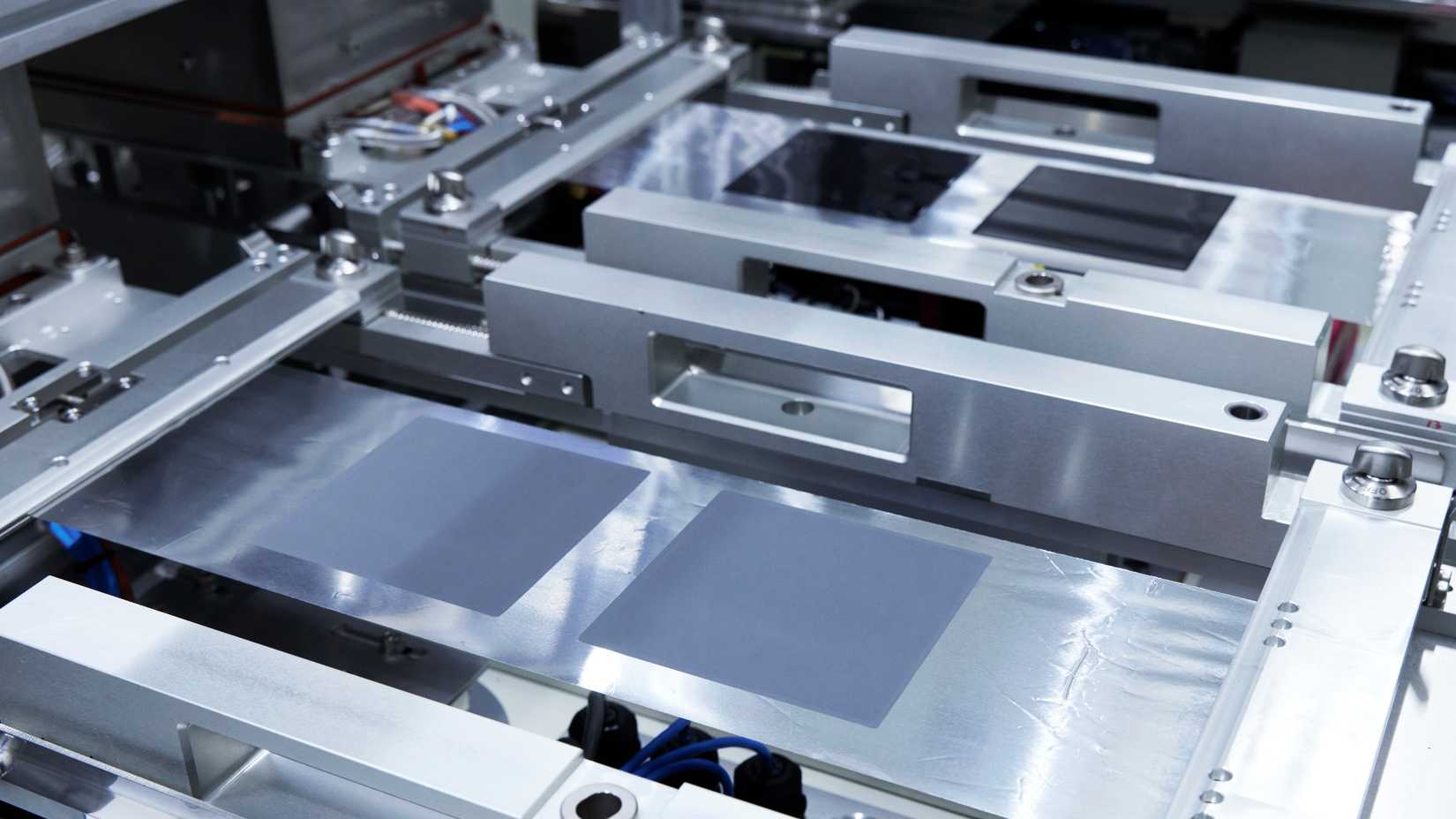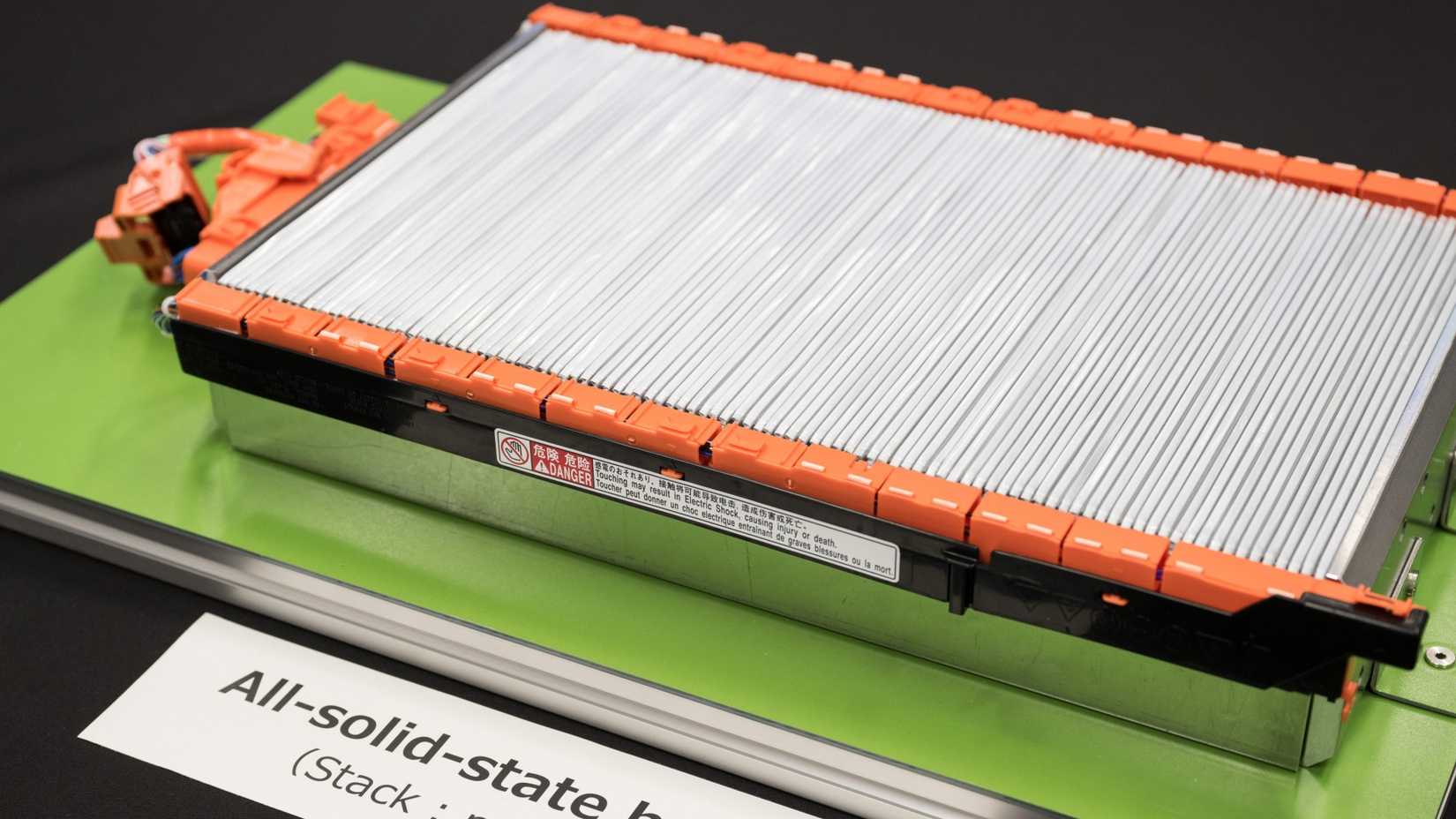
Posted on 10/24/2024 5:41:01 AM PDT by Red Badger

Summary:
* Samsung's 600-mile solid-state battery could revolutionize EVs, offering longer range and faster charging times, setting new standards.
* Solid-state batteries replace lithium-ion, boosting energy density and safety, making them a game-changer in the EV market.
* Challenges of scaling production and cost remain, but collaboration among companies may accelerate the adoption of solid-state batteries in the future.
=================================================================
As electric vehicles (EVs) continue to become a bigger and bigger part of the automotive industry, snagging an eight percent market share according to recent data, one of the biggest hurdles remaining for dominance is battery technology. Sure, something like hydrogen fuel cells is a potentially viable alternative in the future, but likely the next big thing in the world of EVs is solid-state batteries, and companies are Samsung are pushing the limits of what a battery-powered EV can do.
At the SNE Battery Day 2024 event, Samsung stole the show with the announcement of its groundbreaking 600-mile solid-state battery. Sending ripples through the EV segment and the automotive industry as a whole, the promise of batteries this capable is a significant milestone toward an all-electric future. As the world shifts towards sustainable transportation, Samsung's latest advancement could redefine what consumers expect from electric vehicles, potentially setting new standards for range, safety, and performance.
Why Samsung's 600-Mile Solid-State Battery Is A Game-changer
Breakthroughs In Battery Technology
Solid-state batteries, like the one from Samsung, are not only more capable than the standard lithium-ion ones we're used to, but they're also safer. By replacing the liquid electrolyte found in traditional lithium-ion batteries with a solid one, Samsung has increased the energy density to 500 watt-hours (Wh) per kilogram (kg), roughly double what a regular EV battery is rated for. This technology is also safer, reducing the risk of overheating and potential fires, which has always been a major concern of EV batteries.
Potential Impact On The EV Market
The introduction of a 600-mile solid-state battery has the potential to change the electric vehicle market and buyer perception. Range anxiety, long a barrier to wider EV adoption, could become a thing of the past as drivers gain confidence in the range capabilities of these new batteries. With fewer charging stops required on long trips, EVs may become more practical and appealing to a wider breadth of drivers, particularly those who have hesitated to make the switch from gasoline-powered cars.
Outside of just consumer perception, Samsung's new battery could help jump-start a new wave of innovation across the EV industry. As other manufacturers race to develop their own solid-state batteries, the competition could lead to rapid advancements in battery performance, cost, and availability. This could speed up the transition to electric vehicles on a global scale, helping to meet the growing demand for eco-friendly transportation while setting new industry standards for range, efficiency, and safety.
The Technical Details Of Samsung's New Solid-State Battery

How Solid-State Batteries Work
Solid-state batteries operate on a fundamentally different principle compared to traditional lithium-ion batteries found in most EVs today. In a solid-state battery, the liquid electrolyte used to transport ions between the anode and cathode is replaced with a solid electrolyte, a much more energy-dense material. Samsung's design specifically employs a solid sulfide electrolyte, which is known for its high ionic conductivity and stability.
Additionally, solid-state batteries offer improved longevity and efficiency. Samsung's battery, for instance, is proclaimed by the brand to have a lifespan of up to 20 years. This technology also allows for faster charging times, as the solid electrolyte can handle higher voltages and currents without the risk of overheating. Together, these advancements make solid-state batteries a promising option for the next generation of electric vehicles.
Key Features Of Samsung's Battery

Solid State Batteries
Samsung's new solid-state battery hits the ground running with several key features that immediately jump out to anyone in the EV community. The most glaringly obvious of these is its 600-mile range, a step above what current lithium-ion batteries can do. This extended range addresses one of the biggest challenges in the EV market, range anxiety, by providing enough juice for long trips without frequent recharging. Coupled with this impressive range is the battery's estimated nine-minute charging time to 80-percent capacity, which is crazy to think about. For reference, some of the fastest-charging cars on the market take around 15 to 20 minutes (or more) to hit this mark.
Samsung's battery also boasts a remarkable lifespan of up to 20 years, far exceeding the longevity of traditional batteries. Tesla's current batteries, for example, degrade around 12 to 15 percent after 200,000 miles, and are expected to last around the same number of years. Replacing an EV battery is one of the most expensive repairs possible, and a lifespan like this reduces the likelihood of needing to do it. Further, solid-state batteries like this are smaller and lighter than their lithium-ion counterparts, enhancing efficiency and performance even more.
Challenges And Potential Issues With Solid-State Batteries

Current Limitations And Obstacles
One of the primary obstacles facing the takeover of solid-state batteries is the high cost of production. The materials and processes required to manufacture solid-state batteries are currently more expensive than those for traditional lithium-ion batteries. This cost factor could make it difficult to produce these batteries at scale and keep prices competitive for consumers in the near term.
Another limitation is the complexity of scaling up production. While lab-scale production has shown great potential, manufacturing solid-state batteries on a large scale presents significant technical challenges. Issues such as material consistency and ensuring the longevity of the solid electrolyte still need to be fully addressed. These hurdles could delay the mass production of solid-state batteries, pushing back their availability in the market.
What Samsung Isn't Talking About
While Samsung's solid-state battery is a remarkable innovation, there are potential concerns that haven't been widely discussed. One issue is the real-world performance of these batteries under various conditions. Factors like extreme temperatures or heavy usage over time could impact the battery's efficiency and longevity, raising questions about how well these batteries will perform in everyday scenarios. That said, Samsung delivered the first batch of batteries earlier this year and has received positive feedback to this point.
Another potential concern is the recyclability of solid-state batteries. The materials used in these batteries may require new recycling processes if produced at scale, which are not yet fully developed. This could pose environmental challenges if these batteries become widely adopted without a clear plan for their end-of-life management. Even though Samsung is projecting a two-decade lifespan for these batteries, they will eventually reach their end of life. And it's vital to have a plan in place for when that day comes, long before it gets here.
The Future Of Solid-State Batteries In The EV Industry
Ongoing Research And Development
The development of solid-state batteries, including Samsung's 600-mile version, marks just the beginning of what could be a new era in EV technology. Research and development efforts are ongoing, with various companies exploring ways to improve the efficiency, safety, and cost-effectiveness of EV batteries. Innovations like alternative solid electrolytes and new manufacturing techniques are being investigated to overcome current limitations and pave the way for large-scale production.
One thing that is likely to contribute to this technology coming even faster is collaboration between brands and companies. With Samsung seemingly leading the way at this point, it's reasonable to expect other manufacturers to follow suit, and either try to tag along with Samsung or join forces to catch up to the Korean tech company. Either way, for consumers and enthusiasts, the potential for big businesses to start pooling resources and effort to make this happen is a good thing. Competition breeds speed, efficiency, and lower costs.
Market Adoption And Consumer Perception

While the technology behind solid-state batteries is promising, market adoption will depend on several factors. Consumers' willingness to embrace this new technology will hinge on its proven reliability, safety, and affordability. If solid-state batteries can deliver on their promise of longer range, faster charging, and extended lifespan at a competitive price, they could rapidly gain traction in the EV market.
That said, outside of the technological and production hurdles facing solid-state batteries, they could also drive vehicle prices too high for everyday consumers. As of now, Samsung is only testing these batteries within the premium EV segment, hinting at the fact that they might be a bit pricey for most people.
Ping!...................
A 9-minute charge time to reach 80% capacity on a 600 mile range battery?
I’ll believe it when I see it.
“A 9-minute charge time to reach 80% capacity on a 600 mile range battery?
I’ll believe it when I see it.”
That caught my eye also.
It appears that our daily dose of climate fear porn is now twinned by a daily dose of super battery hope porn. ‘Twould be great. However, if we ever get some inexpensive, reliable high capacity batteries, but we still have an inadequate grid and increasingly unreliable generating capacity.
When can I get a small one to eliminate the “ceiling chirp”?
That would be awesome, though, provided that the electricity is provided by nuclear power!
estimates, predictions, models, projections. In other words: vaporware.
This battery “announcement” is for a battery that doesn’t even exist. Because if it was a real battery, they would have real data on it. They would have real examples of recharge times from real battery chargers, hot and cold degradation, number of recharge cycles and the degradation curve. But they don’t.
I put this in the monthly battery breakthrough folder. Battery technology breakthroughs are announced nearly every month, except the don’t happen.
Even at 9 minutes, it’s gonna be too long in many places where lines will be very long waiting to r3charge- people get pissed off over taking 5 minutes to top off a tank of gas ⛽️ and lines are already long at regular gas stations- adding to the time will just cause all kings of anger it seems. Yeah, 9 minutes is better than 1/2 to recharge, but tempers are gonna flare terribly
Also, is that 600 miles WITHOUT running anything like air conditioner or heater? Gets mighty hot in places, and freezing cold in other places.
Perhaps as along as you have an 800 kV supply, you could hit 10 minutes or less.
Presuming equivalent motor efficiencies but slightly lower vehicle weight, one might require 200 kWh of electricity to go 600 miles. It’s just physics.
This technology DOES make the ‘fuel’ tank bigger, but ya gotta be able to fill it.
200 kWh is equivalent to about 4-5 DAYS of electrical consumption for a 3000 sq foot home.
My wife and I (retired) are now likely candidates for a 600 mile EV based on life style. 600 miles is 2-3 weeks of driving for the two of us, combined. I recognize that NOT EVERYONE is a good candidate for an EV and DO NOT support the idea of EV mandates. ALso this time of year our residential solar system is producing about 40 kWh per day and exporting 20-25 kWh daily. Relevance is that we could charge an EV for ‘free’ daily presuming we only drove about 50-60 miles per day (more than our joint average by far). Thus we are NOT a typical household. WE have a good solar system. We generate ‘excess’ power.’ We have 300 AMP service, with an existing 50 amp circuit to the garage. WE drive the target number of miles. We have spare ICE vehicles available.
Someone better than me at figuring amp hours could tell us how long it would take to add say 480 kWh of charge, at 80% efficiency, at 60 amps (doable at our house).
When I was a kid, HEATERS in cars was an OPTION. Air conditioning was a dream only the rich could afford. Americans have gotten soft..................
Another battery built up layer by layer at near the atomic level. They work great but are handmade and VERY expensive.
Handmade until it’s automated.................
There we have it........ there are people for whom EV’s are beneficial.
EV’s are not for the disgruntled Hemi worshipers who are lamenting the death of all that is Chrysler. Nor for those wearing fancy $100 K F-150’s at work. Nor for those who drive on trips exceeding 300 miles on a regular basis.
See your Freep mail
600 miles? That’s huge!
High cost of everything when it comes to EV’s no sale sign still lit.
Feds pimping money isn’t even saving them.
;-)
My (retired) brother who lives three coves away has a Mustang GT and it has been the perfect vehicle for him. It has enough space behind the rear seat for everything he schleps around and his miles-per-trip never exceeds 60 miles round trip. He put in a 60 amp circuit for the car and upgraded to 300 amp service.
We’ve seen his ‘customer experience,’ including the quiet comfort of the car, amazing performance, reliability, and even the quality and frequency of the over the air software updates from Ford.
He also has an F-150 V8 4X4. WE do live in the country afterall ...
PS, nothing in FReepmail yet.
*Correction - my brother has a Mustang MACH E GT.
We regret the error.
60Ax220V = 13.2 kwhrs per hourx.8 = 10.56. So, about 45 hours to charge 480 kwhrs.
It will be a true success if it doesn’t need a subsidy.
Back in the late ‘90s, EPA EnergyStar standards for PC monitors assumed CRT tubes. Except for expensive laptops and small LCD monitors sold to enthusiasts, those were the standard. Backlit LCD monitors and LED monitors were a sliver because of cost, and weren’t generally available in large sizes.
They did and do use a small fraction of the energy, were lighter, don’t get burn-in, and take up much less room. When the price came down, they replaced tubes without regulations to jump-start the market.
Thanks.
So even for us, if we we ‘ran the tank dry’ it would take a week plus of daily plug ins to get it back full. Wouldn’t have to let it sit ALL day every day, but we could leave it plugged in for 4-6 hours a day during peak sun.
Realistically I observe for a fact that EV owners pretty much just plug in every time they park the car at home. We already have a plug-in hybrid, my brother has the Mach E GT, and an across the road neighbor has an Audi EV. Ya get home, plug it in, and leave it that way til ya drive it again. IT might not get to ‘full’ but you put miles back in it.
Disclaimer: Opinions posted on Free Republic are those of the individual posters and do not necessarily represent the opinion of Free Republic or its management. All materials posted herein are protected by copyright law and the exemption for fair use of copyrighted works.